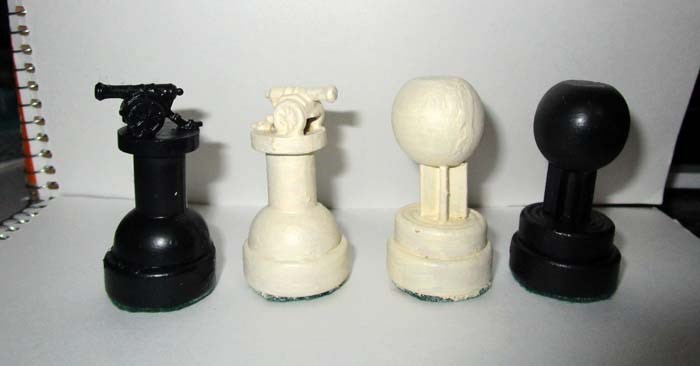As stated before the history of chess is one which saw the game develop along decidedly different lines based on country of origin.
The result is the game we know here in the west, shogi in Japan, and a few others.
Of course when you start delving into modern chess variants several were developed on the premise of bringing the various historic games together on a single board.
And that brings me to this week’s game Shako.
“Inspired by several old chess variants, Jean-Louis Cazaux from Toulouse (France) invented this variant. The name Shako means Chess in Esperanto, `another kind of non-conformism and utopia’, in the words of the inventor,” detailed www.chessvariants.com. “The idea of this variant is to make a new game without directly disposing the large heritage of the classical game. All rules of orthodox chess are kept, and the way the pieces are placed in the opening setup allow players to follow practical all the openings used for orthodox chess. The new pieces are taken from Xiangqi (Chinese Chess), with the intention to bring back together the two branches of the game that went off from India either east to the Orient, and west to the Arabs.”
The result of this effort is a variant played on a 10X10 board, as many of the better new rule set chess games are. If you do not own a 10X10 board and you have any interest in exploring chess variants, buy or fashion a board as a first step.
The set up uses a standard piece array except that they are moved one square forward across the board, and 10 pawns are used, placed on the third rank.
On the corners on the empty back row cannon pieces are added.
“Cannons move without taking like rooks, and they move with taking by going in a straight horizontal and vertical line and jumping over exactly one piece: when a cannon takes a piece, there must be exactly one piece between the original and final square of the cannons move - this piece may be of either color. (This is identical to the move of the cannon in Xiangqi),” noted www.chessvariants.com
The cannons are pieces you will need to fashion in most cases. You can substitute rooks from an alternate chess set, or be a touch more creative.
Using large push pins from a ‘dollar store’ I mounted actual cannons from a Risk game salvaged cheaply from a yard sale, and viola, a bit of glue and paint they are rather nice cannons (see accompanying photo).
The eight familiar chess pieces centre the second row, allowing elephants to be added on the extreme outside square, just forward of the cannons.
Elephants move one or two squares diagonally. When an elephant moves two squares, it is allowed to jump, the intervening square does not have to be empty, (think knight leap).
Again you will need to create the elephants. I opted for a large round wooden ball mounted on some odds and ends I had on hand. I wanted to add a symbolic trunk but never managed to find anything that worked. Still the bulky size fits the idea of an elephant nicely. (Again see photo).
All other pieces move like in orthodox chess; also castling is as in usual chess. Pawns promote on the tenth row of the board to queen, rook, knight, bishop, elephant, or cannon, to the owning players choice.
This is a rather straight forward blending of games, without a lot of new thought. The added pieces sit on the fringe of a familiar set up.
But, it still works neatly to give a slightly different feel to a game of standard chess without a massive learning curve.
Next week we look at a variant where new pieces are much different, so you have more to take in before playing.



